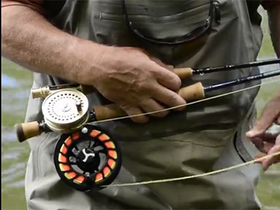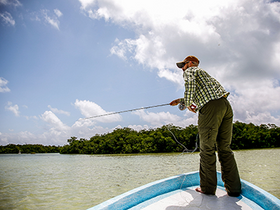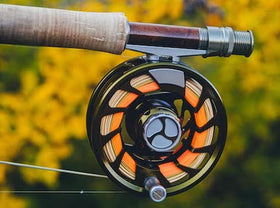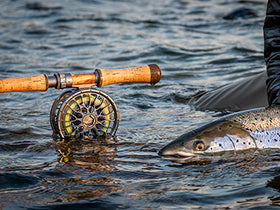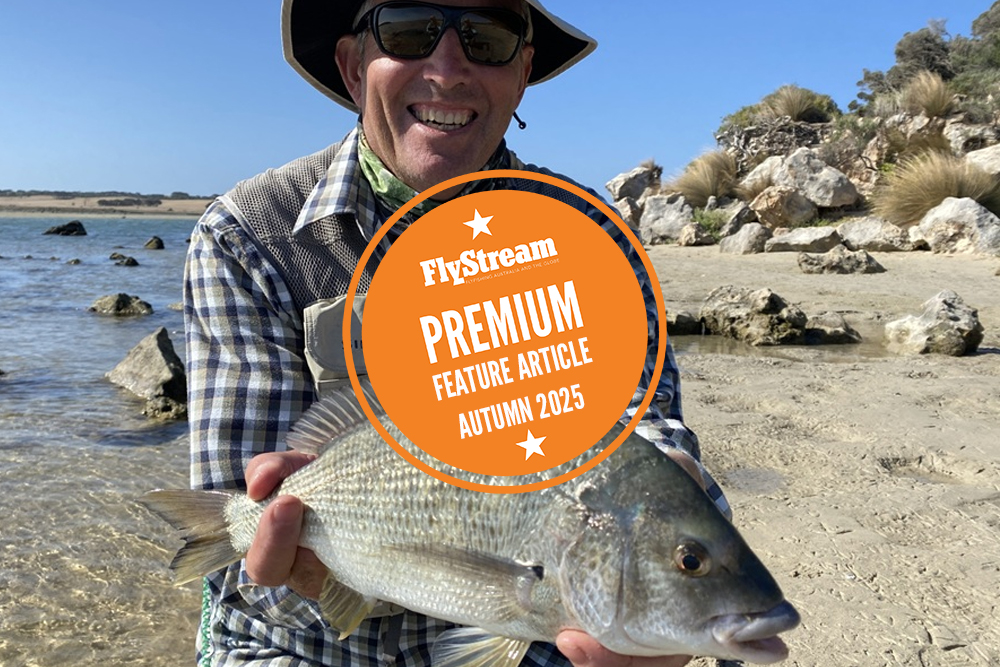
Philip keeps learning on the mighty Glenelg River estuary in south-west Victoria.
Besides having a name that’s a palindrome, the Glenelg River in its lower reaches is also a fine fishery. Although the upper freshwater section of the Glenelg is beset by all sorts of environmental challenges, the ‘good’ section – primarily a huge estuary – is, by contrast, in remarkable health. Winding through the protected forest and limestone cliffs of the Lower Glenelg National Park for 60km plus, it must be longest tidal river system in Victoria.
 Over 40km from the mouth, the Glenelg is still a big, deep estuary.
Over 40km from the mouth, the Glenelg is still a big, deep estuary.This estuary is also consistently deep. We’ve regularly sounded 9 metres 30km from the mouth (as far up as we’ve actually operated the boat and sounder), and downstream from Nelson, there are even deeper holes. And the Glenelg estuary is wide – at least two big casts across, and often many times that.
Then there’s the sheer productivity/ fertility. Whether this is due to the size of river, the limestone, the permanency of the water or some other factor, the system and its surrounds simply teem with life. It must be a birdwatcher’s paradise, with every conceivable species of waterfowl and gull, oystercatchers, ibis, egrets, spoonbills… you name it. Not to mention sea-eagles, wedgetails, ospreys and other raptors, and any number of weird and wonderful parrots.
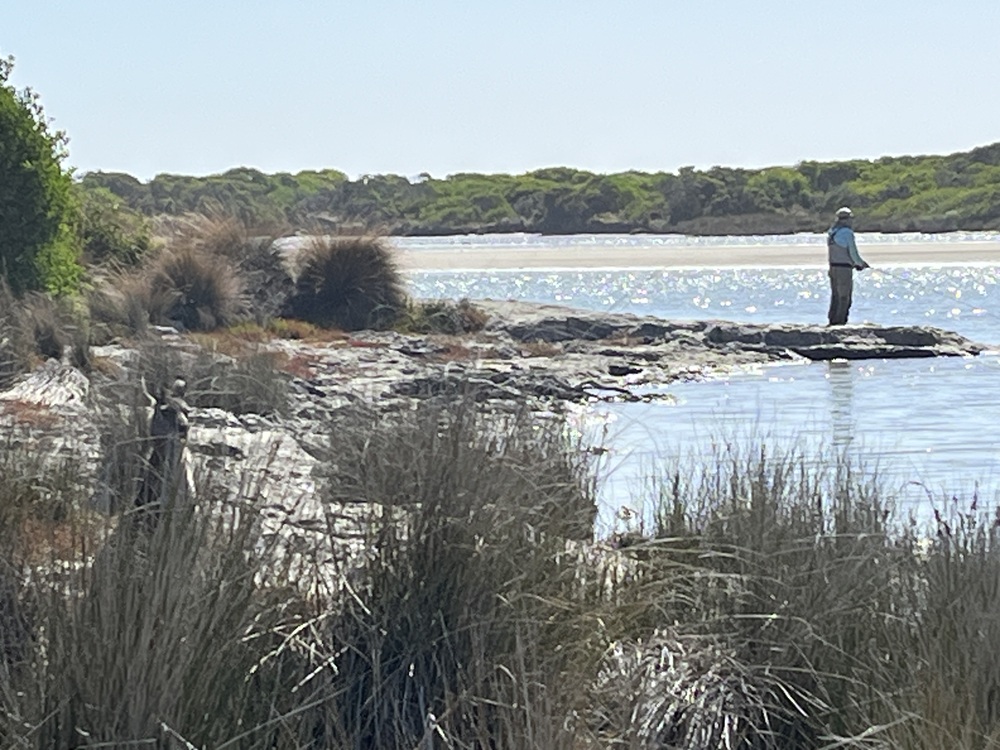 In this fertile area, the wildlife is never far away.
In this fertile area, the wildlife is never far away.Then there are of course the kangaroos, various wallabies, and almost daily sightings of emus. Koalas are heard if not always seen, and on our last trip, I think I spotted a quoll.
As for the fish… On our most recent trip, virtually any cast, anywhere, brought enthusiastic follows from baby bream. Added up, there must have been literally millions of them in the river as a whole. Then there were schools of various minnows everywhere, from pin-fry to several centimetres long. Some were evidently juveniles of larger-bodied fish, others were galaxias and similar.
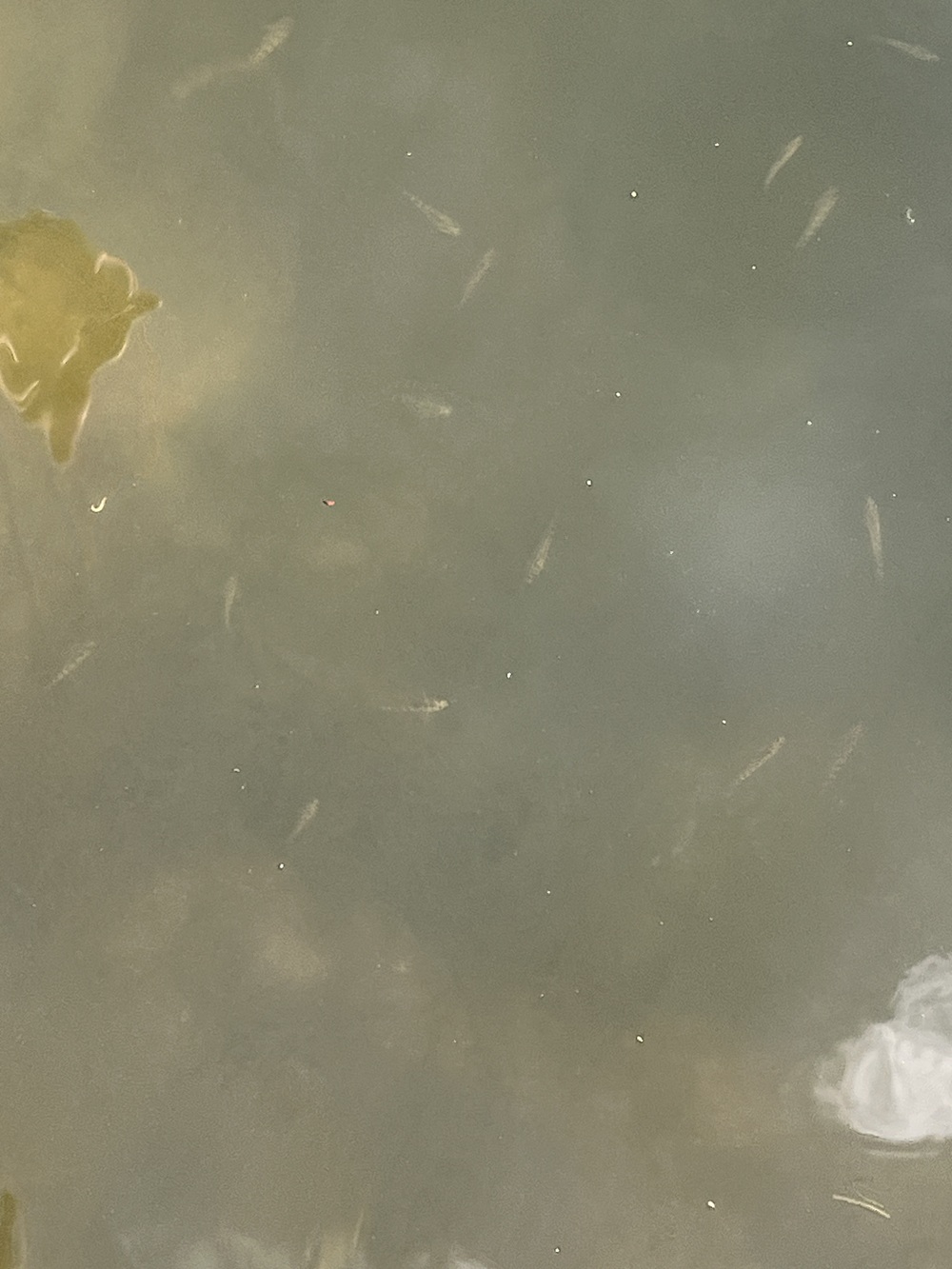 Almost wherever you look, there are baitfish and juveniles.
Almost wherever you look, there are baitfish and juveniles.Last but not least are the fish we want to catch, the most abundant of which are bream, estuary perch, and Australian salmon. I’ve caught one mulloway (the Glenelg is a known hotspot, if there is such a thing!) and I’m pretty sure a mate lost another two years ago – either that or he accidentally hooked a shark! Another reliable contact recently described a good spot on the river to catch big luderick, a species I would be more confident trying for after some Sydney fly action last winter. I haven’t made time to target them on the Glenelg… so far.
Oh, and there are stacks of really good-sized (40cm plus mullet) in the river. I’ve only caught them as bycatch while trying for the more ‘glamourous’ species, but they could be great fun for anyone willing to target them.
Don’t let scale scare you
On my first couple of trips to the Glenelg, the scale of the river felt like a curse as much as a blessing. Without up-to-the-minute local knowledge, how was I expected to find fish that could have been hiding anywhere in 60 kilometres of river? I coped by focusing on the water immediately up from the mouth, with its defined smaller channels, regular and obvious tidal movement, ‘manageable’ depth, and easy bank and wading access – all of which contributed to at least some fish-finding belief.
More recently, I’ve fished further upriver as well – in fact tens of kilometres upriver. In the process, I’ve learnt that almost anywhere can be great. Yes, I’m sure spawning migrations, big tides, floods and so on can cause target species to concentrate in some sections at times. However, I now really doubt that large areas of the river periodically become devoid of fish. There are simply too many of them! On our last trip, we caught multiple fish (bream, EPs or both) in areas ranging from a few casts short of the ocean, to 30 kilometres upstream, and numerous places in between.
Sure, there are times and places where I catch very little, but more and more, I suspect that may be my inability to fool the fish which are in fact there. For example, on a recent visit, JD and I polaroided literally dozens of big bream near the river mouth, but after an hour of effort each, we weren’t able to hook a single one. When you can actually see bream after bream right next to your fly, you can’t really argue they’re not present!
Similarly, friends and I have often fished a certain cove or edge upriver for nothing, only to have exactly the same spot abruptly come alive once the sun has set. I very much doubt all those fish suddenly arrived at that location. More likely, they were there all along, but couldn’t be caught – at least not by us.
Boat or bank?
The Glenelg estuary is mostly well-sheltered from strong winds, and there’s plenty of boat-floating depth except right on some edges, or down close to the mouth. The boating option is further enhanced by a series of good quality boat ramps, placed at convenient intervals along the river. For canoes and kayaks, the number and convenience of launching sites only increases.
 There's no doubt that a boat opens up a lot of water....
There's no doubt that a boat opens up a lot of water....Because a lot of the riverbanks are steep and/ or heavily vegetated upstream from Nelson, a boat of some sort certainly opens up otherwise inaccessible water. However, such is the length of the river, even the limited amount of bank access up here that’s suitable for flyfishing, is more than you could hope to cover in several trips.
From around town and on down to the mouth, I almost prefer fishing from the bank or wading as the best way of accessing the numerous channels and flats, many of which are difficult or impossible to navigate by boat. I also enjoy the stealth and control I have on foot, compared to being in a boat which doesn’t always stay where you want it to in the nearly constant wind and current down there.
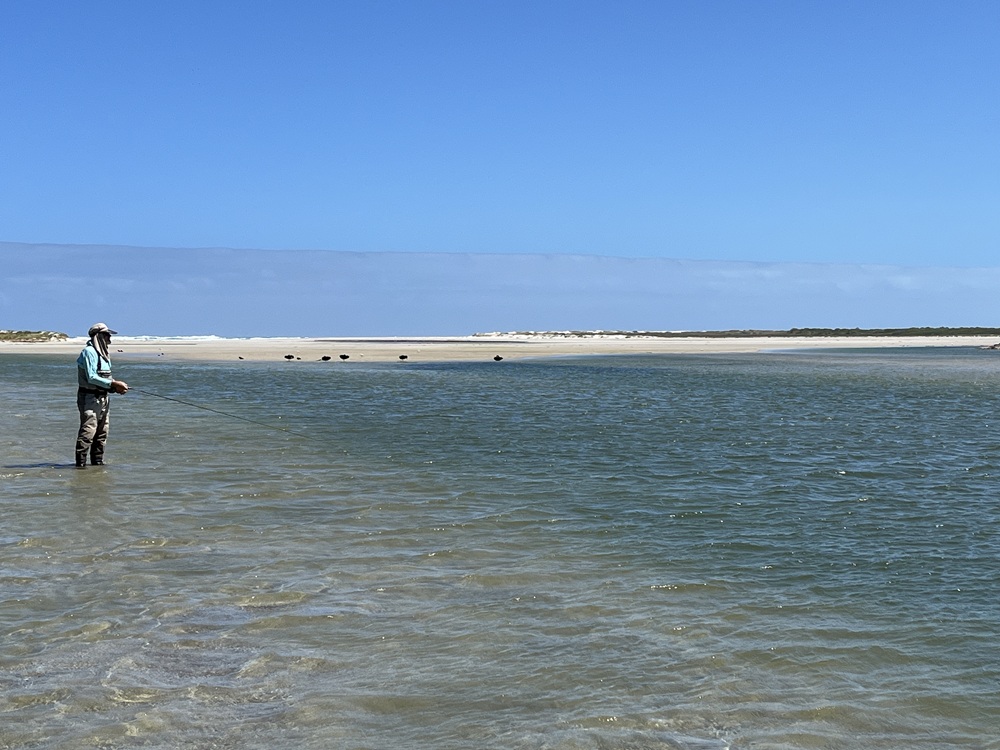 ... but there are plenty of options on foot, and down near the mouth, I find walking and wading actually provides better fishing opportunities.
... but there are plenty of options on foot, and down near the mouth, I find walking and wading actually provides better fishing opportunities.Summer or winter?
Because I’m often busily chasing trout during the warmer months, I’ve tended to do less estuary fishing then. However, the Glenelg fishing in summer seems at least as good as during the cooler months. Surprisingly, there’s very little I to need to do differently from one season to the next – except perhaps to fish bigger surface flies in summer.
Now evidently, there are certain times of year when spawning behaviour may cause concentrations of particular species. And there are certain water regimes, like big flows of freshwater, which are perhaps more common in winter/ spring (although possible at any time of year) that may also impact where in the system the fish concentrate.
And then there are mulloway, which seem to generate a whole new level of seasonal witchcraft to decipher, and I’m not going to go there!
Light or dark?
The huge eyes of estuary perch, and their almost supernatural ability to find flies at night in dirty water, show they’re well-adapted to low visibility conditions. But for all that, the longer I fish for EPs, including in the Glenelg, the more I realise they can be caught often enough under a high, bright sun. By all means cast into the shadows, hope for overcast skies, and build a decent evening session into your fishing plans. However, even if it’s midday under blue skies, don’t give up.
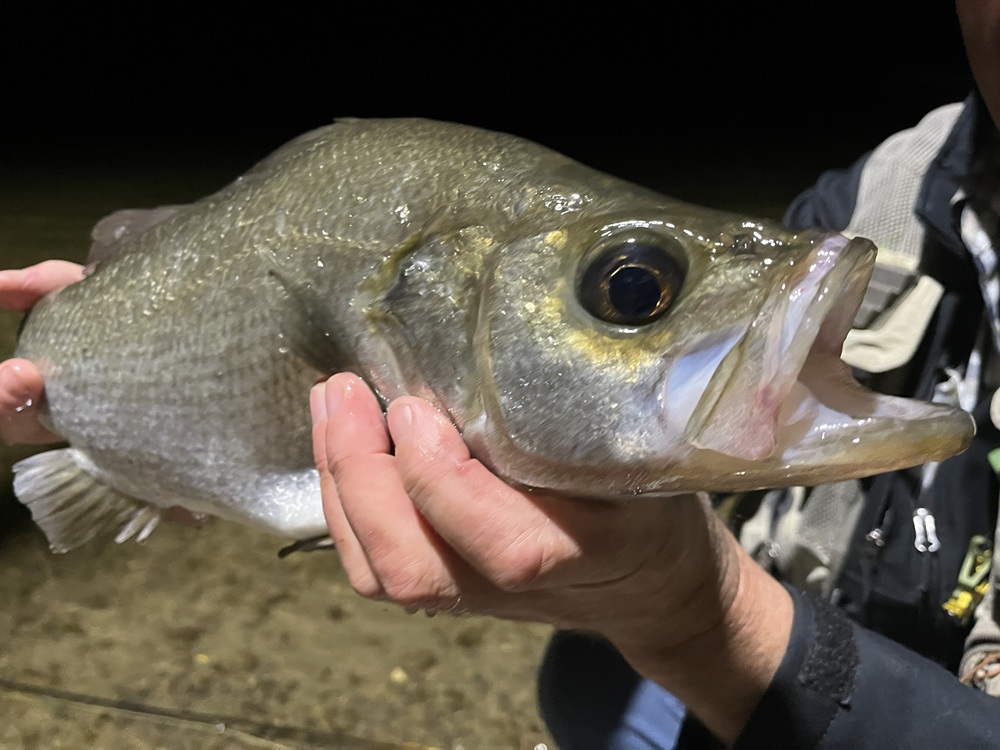 EPs have eyes for the dark...
EPs have eyes for the dark...For bream, low light doesn’t hurt, but even more than EPs, we catch them under bright skies regularly. In fact, for polaroiding the Glenelg, we often hope for lots of sun. Yes, if that coincides with super clear water, the bream can get a bit jumpy… but on the other hand, you get more shots.
As for mulloway, once again the facts are murky (sorry!). They are reputed to be night predators, and the odds probably favour fishing when the sun is below the horizon at either end of the day. All I can say is, the one mulloway I caught in the Glenelg, and the one we lost, were both during broad daylight.
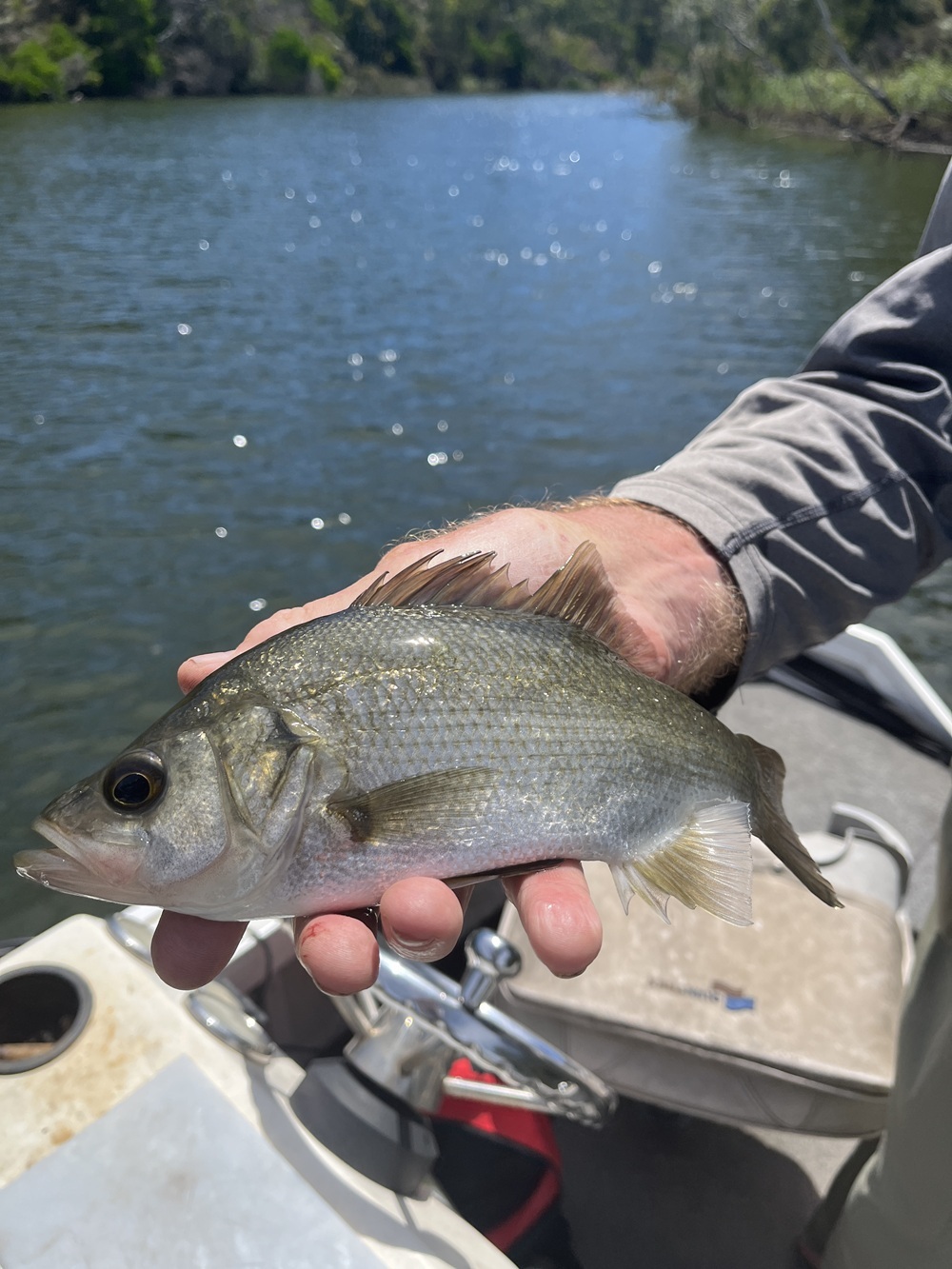 ... yet can often be caught in bright sunshine.
... yet can often be caught in bright sunshine.Finally, salmon and mullet in the Glenelg seem all but oblivious to sunlight: there’s no low light advantage; in fact, perhaps the opposite.
Indicators
Prior to my most recent Glenelg trip, I kept replaying a Craig Coltman bream fishing tip in my mind: ‘Only move the fly so you can stop it’.
Now, I’ve mixed pauses into my bream retrieves for decades, but something about this phrase stuck. I know I’m guilty of impatience when it comes to pausing, and perhaps I’m also a bit concerned that I’ll miss a take during the slack line of the pause.
This line of thinking coincided with my recent infatuation with Oros indicators. The more I thought about it, the more I wondered if these seemingly basic but very clever devices might be the answer to both issues? These indicators are easy to cast (especially important in the every-present wind on south-west estuaries) easy to adjust, and remarkably buoyant – even in the smallest and least obtrusive sizes I had in mind.
 Using an Oros indicator to help with 'pausing' and depth management, worked like a charm for me, including with this channel-cruising bream.
Using an Oros indicator to help with 'pausing' and depth management, worked like a charm for me, including with this channel-cruising bream.Anyway, I couldn’t let go of the idea, and at the start of this last trip, I took a deep breath and attached an Oros indicator about 5 feet above my first fly, a Merri Minnow. The fact it was still there three days later tells you all you need to know. While I moved it up or down the leader a little depending on depth and fly weight, I never took it off except to change indicator colour. Sure enough, as I imagined it would, it gave me a focal point to stop me ‘cheating’ on the pause with that almost subconscious fidgety retrieve some of us can be guilty of! And as you would expect, it indicated takes during the pause: diving, or darting left or right. And if a fish took mid strip? I usually felt it anyway; the Oros was merely visual back-up. Lastly, the indicator’s capacity to suspend a stationary wet fly at a given depth (rather than continuing to sink), provided some protection from getting snagged on weed, rocks or sticks: I could see or guess the depth and adjust the indicator accordingly.
My fishing mate JD, who used a conventional indicator-less setup the whole trip, mused about whether this indicator method offered a real advantage, or simply appeared to. In the end, he conceded (half-jokingly), “Well, it doesn’t not offer an advantage.” I’ll leave it to you to decide for yourself. Meanwhile, I’ll be using the indicator system regularly from now on, if not always.
Fly Decisions
While the Glenelg trip mostly didn’t offer any lightbulb moments about flies, there were a few interesting insights. White flies did well at times, enough for me to decide I need more of them in my box for estuary fishing. We also had regular success on a dark olive BMS with a red glass bead – with both bream and EPs. Several other flies worked too, including olive Woolly Buggers (on saltwater hooks of course) and Merri Minnows. I couldn’t say for sure that there was one standout among the wet flies. As usual though, weight and size were important depending upon time of day, water clarity, depth and current.
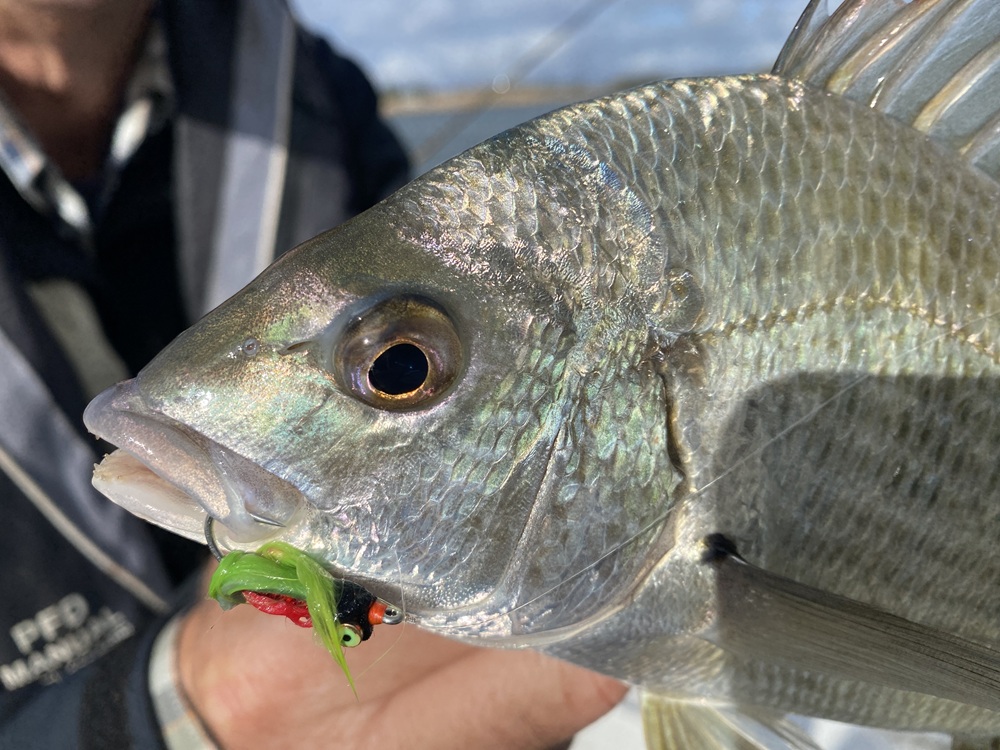 The Merri Minnow was good, but not perfect.
The Merri Minnow was good, but not perfect.One clear winner for evening fishing was a Gurgler in size 8-10. Blooped along close to the banks and cover at first, then out wider as it got darker, I’m pretty sure if an EP saw it, it at least tried to eat it. (During the cooler months, we’ve found smaller patterns seem better for surface feeders.)
Other points
Water clarity is an interesting variable. Most of the time, summer or winter, the Glenelg estuary varies from about one metre visibility, to at least double that when sea water pushes up at high tide, so fish finding the fly is not an issue. However, at times of sustained heavy rainfall in the mid catchment (from above Dartmoor to Rocklands), very discoloured water can push down the estuary. While this doesn’t make flyfishing impossible, it does reduce the distance from which fish can detect the fly. On the other hand, some colour can make the fish less cautious and more willing to eat.
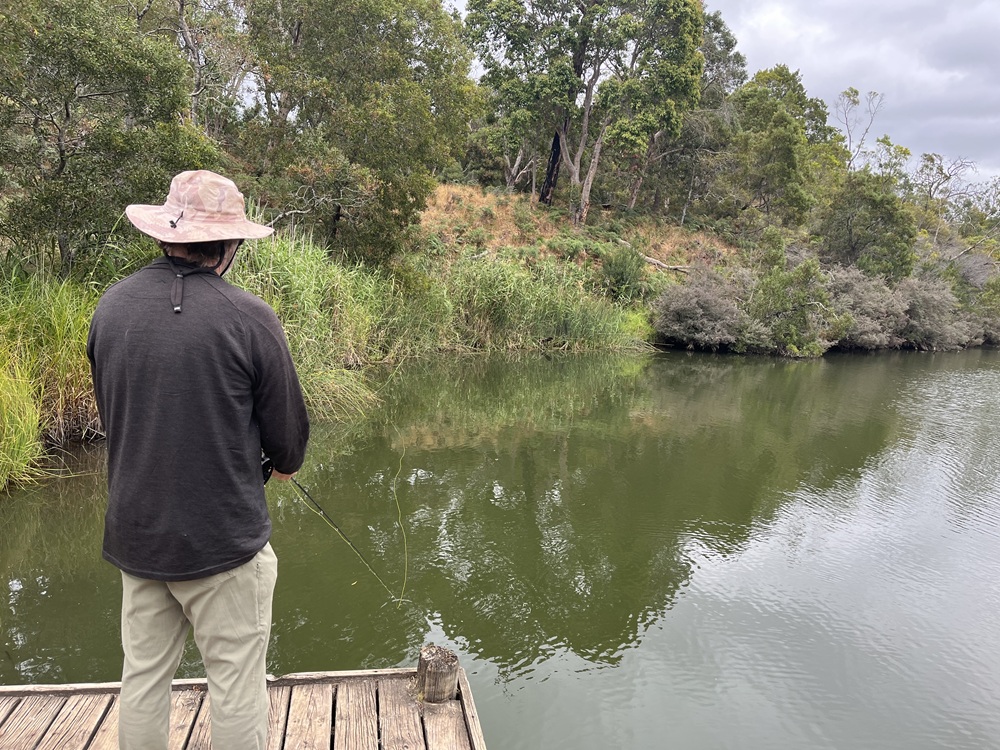 A little bit of colour in the water probably helps the fish to feel safer, and to be less cautious eating flies.
A little bit of colour in the water probably helps the fish to feel safer, and to be less cautious eating flies.Speaking of discolouration, an annoying daily issue is boats exceeding the speed limit. This speed limit varies depending on location and a range of other factors, but except in the defined water-skiing area, is never more than 10 knots. Besides the danger speeding boats pose to other water users like swimmers, canoeists and kayakers, boat wash can muddy the edges for hours, and no doubt it damages some of the softer banks and weed-beds.
It would be good to see more enforcement of speed limits on the Glenelg – it wouldn’t take long to raise the fines revenue to cover the cost of compliance staffing! As usual, most people do the right thing, but a few idiots apparently need reminding.
Back to more pleasant topics, and on the latest trip, we did best (during daylight at least) fishing water less than 3 metres deep. We’ve found this to be broadly the case at other times of year too. This may be simply because we can’t fish deeper water as efficiently with fly… or perhaps we could by changing to heavier flies and a fast-sinking line. However, then we wouldn’t be able to fish the shallower water and structure properly – and because such places have proved very productive, that would be a big call.
And in case you’re asking, yes, at some point, we probably need to knuckle down and fish deep and big for mulloway, and temporarily sacrifice the more consistent action targeting other species. That’s probably the next big Glenelg lesson to learn.





